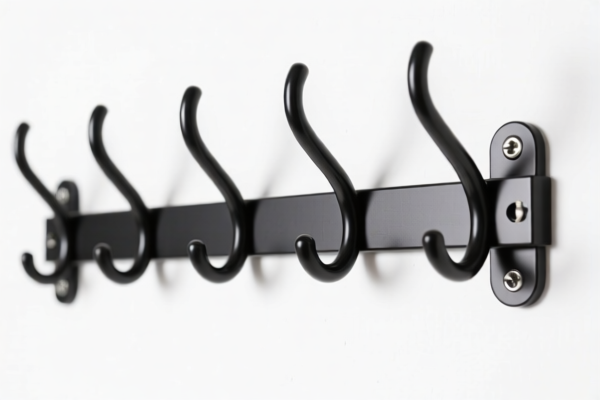| HS Code | Official Doc | Tariff Rate | Origin | Destination | Effective Date |
|---|---|---|---|---|---|
| 8304000000 | Doc | 33.9% | CN | US | 2025-05-12 |
| 9403200082 | Doc | 80.0% | CN | US | 2025-05-12 |
| 9403999020 | Doc | 80.0% | CN | US | 2025-05-12 |
| 7308903000 | Doc | 80.0% | CN | US | 2025-05-12 |
| 7308906000 | Doc | 80.0% | CN | US | 2025-05-12 |
| 9406900150 | Doc | 82.9% | CN | US | 2025-05-12 |
| 9406900190 | Doc | 82.9% | CN | US | 2025-05-12 |
| 7610900080 | Doc | 85.7% | CN | US | 2025-05-12 |
| 7610900060 | Doc | 85.7% | CN | US | 2025-05-12 |
| 9503000090 | Doc | 30.0% | CN | US | 2025-05-12 |
| 9503000071 | Doc | 30.0% | CN | US | 2025-05-12 |
| 4823901000 | Doc | 55.0% | CN | US | 2025-05-12 |
| 4823908000 | Doc | 55.0% | CN | US | 2025-05-12 |
| 4819600000 | Doc | 55.0% | CN | US | 2025-05-12 |




Animal Rack
An animal rack is a self-contained housing system used for laboratory animals. These systems are designed to provide a controlled environment for breeding, rearing, and maintaining animals used in research, testing, and production.
Material
Animal racks are typically constructed from:
- Stainless Steel: Most common material due to its corrosion resistance, durability, and ease of sterilization. Different grades of stainless steel are used depending on the specific application and budget.
- Powder-Coated Steel: Offers a more economical alternative, providing corrosion resistance, though generally less durable than stainless steel.
- Plastic: Used for smaller cages and components, often polypropylene or polysulfone, valued for their lightweight and chemical resistance.
- Aluminum: Can be used for framing and supports, offering a lighter weight option.
Purpose
The primary purposes of animal racks are:
- Containment: Securely house animals, preventing escape and minimizing the risk of contamination.
- Environmental Control: Maintain consistent temperature, humidity, and airflow.
- Waste Management: Facilitate efficient collection and removal of animal waste.
- Organization: Provide a structured system for managing a large number of animals.
- Biosecurity: Help prevent the spread of disease and maintain the health of the animal colony.
Function
Animal racks function as a core component of a larger animal housing facility. Key functional aspects include:
- Cage Support: Racks hold individual cages, often with sliding mechanisms for easy access.
- Ventilation: Provide airflow to remove odors, ammonia, and particulate matter. Systems can be passive (relying on natural convection) or active (using fans and filters).
- Watering System Integration: Accommodate automatic watering systems, such as bottle drinkers or automatic nipples connected to a central water supply.
- Feeding System Integration: Allow for the use of automatic feeding systems or manual feeding.
- Waste Collection: Many racks incorporate drip pans or trays to collect urine and feces, often connected to a waste disposal system.
- Sterilization Compatibility: Designed to withstand repeated cleaning and sterilization procedures.
Usage Scenarios
Animal racks are used in a wide range of settings:
- Research Laboratories: Universities, pharmaceutical companies, and biotechnology firms utilize racks for conducting animal studies.
- Drug Development: Racks are essential for preclinical testing of new drugs and therapies.
- Toxicology Studies: Used for assessing the toxicity of chemicals and environmental contaminants.
- Breeding Colonies: Maintain genetically defined animal populations for research purposes.
- Animal Production Facilities: Used in the breeding and rearing of animals for specific purposes (e.g., organ transplantation).
- Veterinary Hospitals and Clinics: Used for housing animals undergoing diagnostic testing or treatment.
Common Types
- Standard Cages Racks: Most common type, designed to hold a specific number of standard-sized cages.
- Mobile Rack Systems: Racks mounted on wheels for easy movement and reconfiguration.
- Washdown Racks: Designed for frequent and thorough cleaning with disinfectants.
- IVC (Individually Ventilated Cages) Racks: Racks designed to hold cages with individual ventilation systems, providing a higher level of biosecurity.
- High-Density Racks: Designed to maximize the number of animals housed in a given space.
- Automated Racks: Integrated with automated systems for cage washing, watering, and feeding.
- Rodent Racks: Specifically designed for housing rodents (mice, rats, guinea pigs).
- Rabbit Racks: Larger racks designed to accommodate rabbits.
- Primate Racks: Specialized racks designed to meet the unique needs of primates.
Based on the provided information, “animal rack” can be classified under the following HS codes:
-
9406900150: Prefabricated buildings: Other Other: Animal sheds of plastic.
- 94: Furniture; bedding, mattresses, support, stuffing and similar furnishings; lamps, lighting fittings, illuminated signs, prefabricated buildings. This chapter covers furniture and related structures.
- 06: Prefabricated buildings. This heading specifically refers to buildings constructed off-site and assembled on location.
- 900150: Other, specifically animal sheds made of plastic. This subheading narrows the classification to prefabricated animal shelters constructed from plastic materials.
-
9406900190: Prefabricated buildings: Other Other: Other.
- 94: Furniture; bedding, mattresses, support, stuffing and similar furnishings; lamps, lighting fittings, illuminated signs, prefabricated buildings.
- 06: Prefabricated buildings.
- 900190: Other, representing prefabricated buildings not specifically categorized elsewhere within this heading. This could include animal racks constructed from materials other than plastic.
Regarding HS code 9406900150 and 9406900190, please note the total tax rate is 82.9%, comprised of a 2.9% basic tariff, a 25.0% additional tariff, and a 30.0% additional tariff applicable after April 2, 2025. Additionally, a 25% additional tariff applies to steel and aluminum products.
Customer Reviews
No reviews yet.